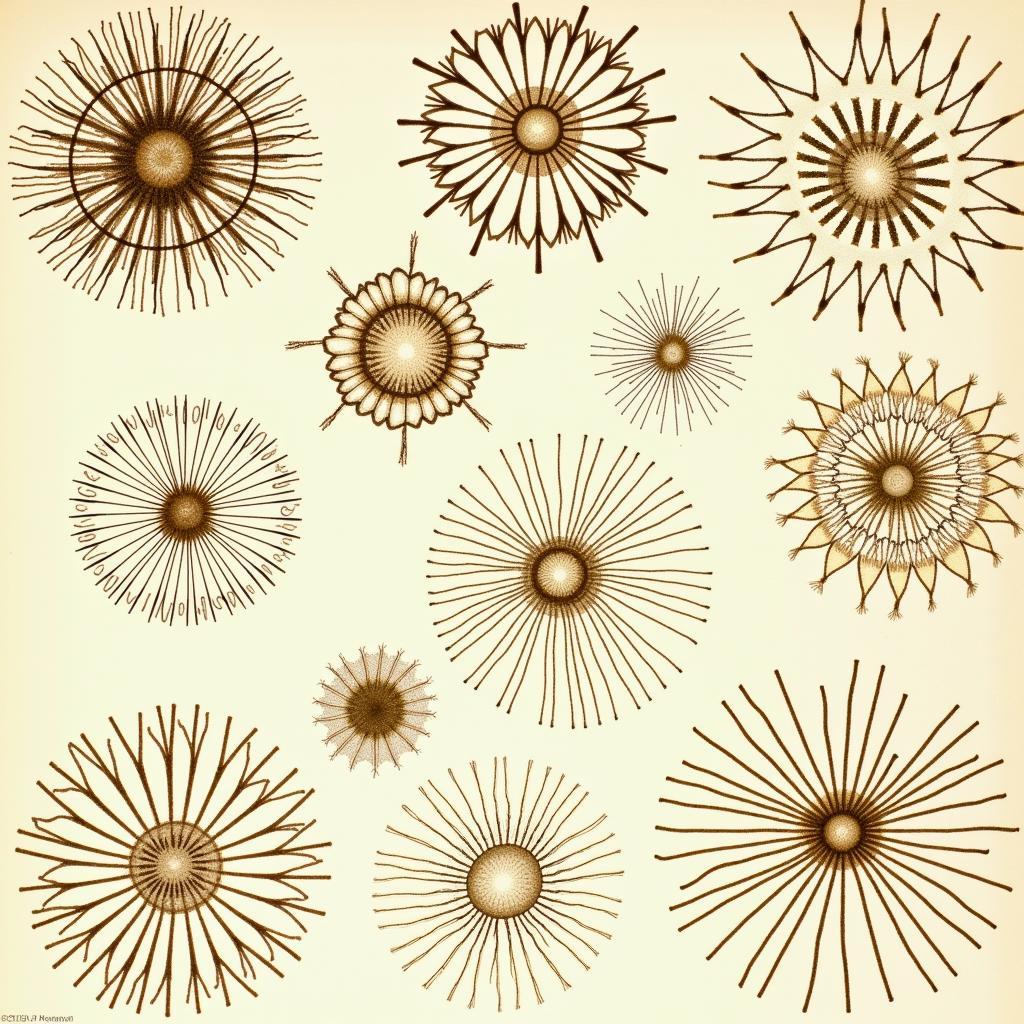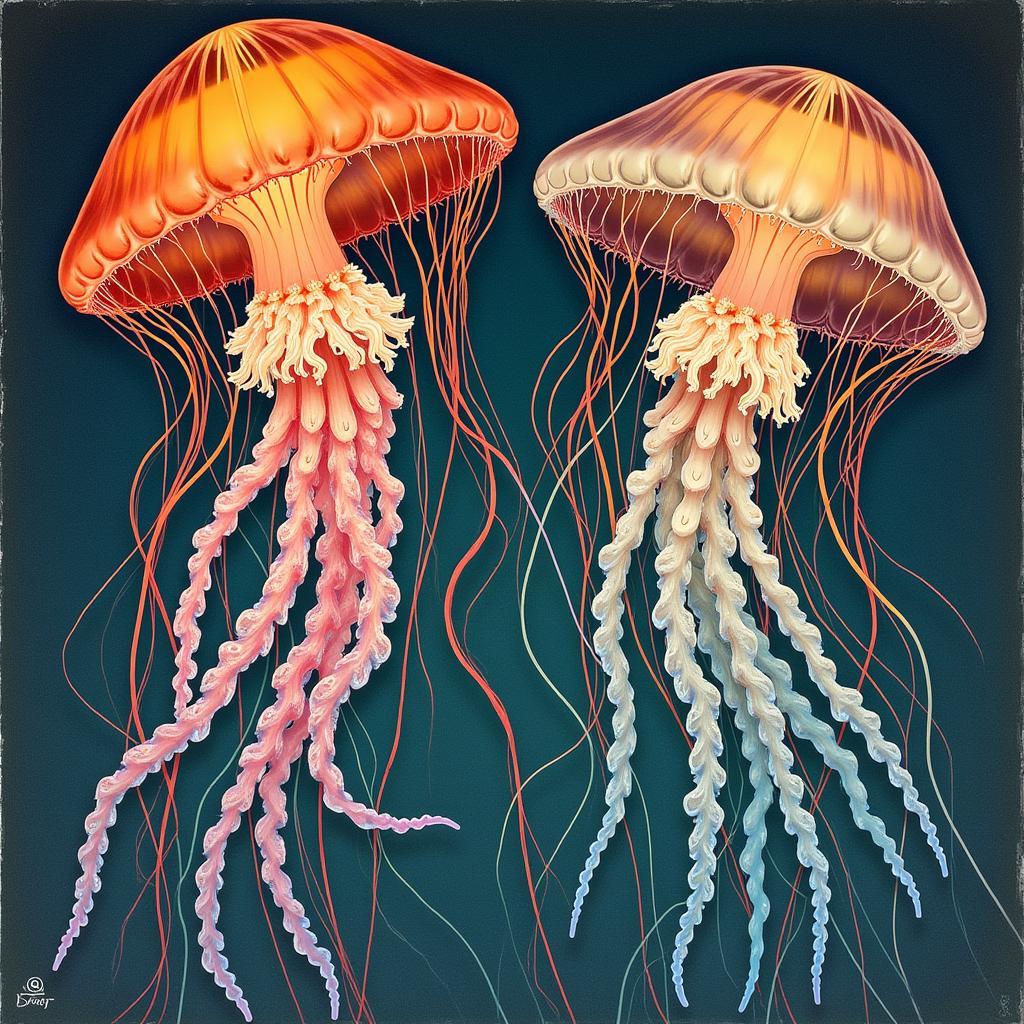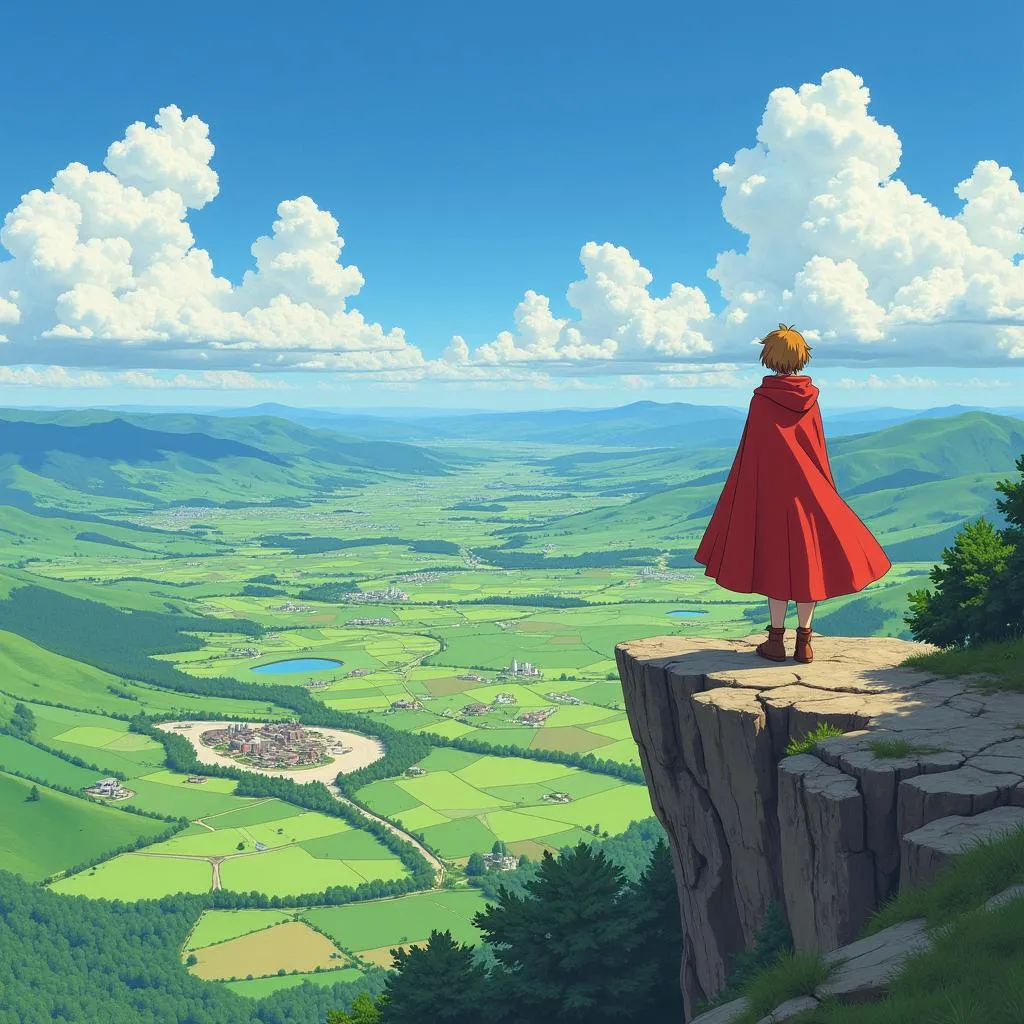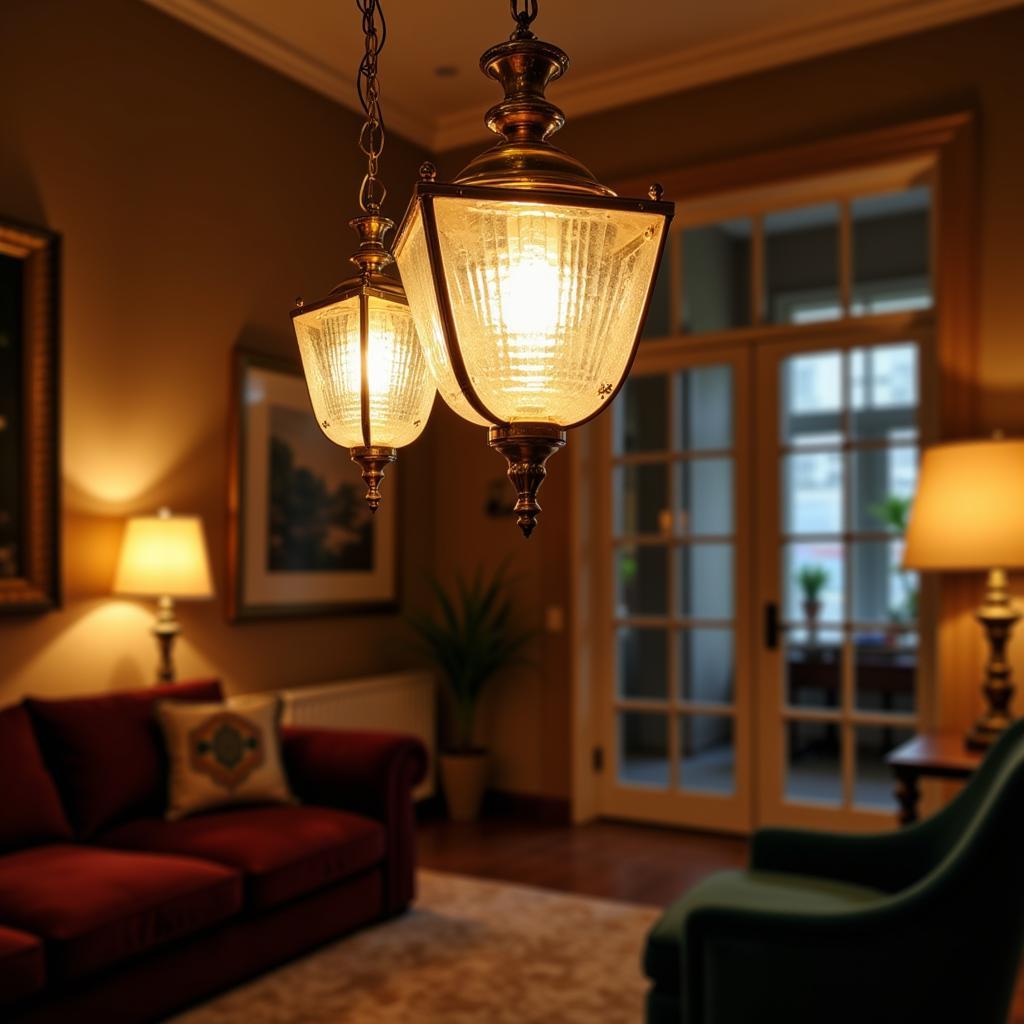Haeckel Art Forms in Nature: Exploring the Intersection of Art and Science
The intricate beauty of Haeckel Art Forms In Nature has captivated scientists and artists alike for centuries. From the delicate symmetry of radiolarians to the vibrant colors of jellyfish, these natural forms offer a glimpse into the astounding diversity and complexity of the biological world. This exploration delves into the fascinating world of Haeckel’s work, examining its influence on art, design, and our understanding of the natural world.
Discovering the World of Haeckel Art Forms in Nature
Ernst Haeckel, a 19th-century German biologist, naturalist, philosopher, physician, professor, and artist, dedicated his life to studying the intricate details of living organisms. His meticulously detailed drawings and paintings, often depicting microscopic organisms and marine life, transformed scientific observation into stunning works of art. Haeckel’s illustrations not only documented the natural world but also revealed its inherent artistic qualities, inspiring generations of artists and designers. He believed in the interconnectedness of all living things and saw art as a way to express this fundamental principle.
Haeckel’s most famous work, Kunstformen der Natur (Art Forms in Nature), published between 1899 and 1904, showcased his remarkable talent for capturing the beauty and complexity of Haeckel art forms in nature. The book featured over 100 lithographic and autotype prints of various organisms, ranging from single-celled diatoms to complex vertebrates.
 Haeckel's Radiolarians: Art Forms in Nature
Haeckel's Radiolarians: Art Forms in Nature
These illustrations quickly gained popularity, influencing Art Nouveau and other artistic movements. Haeckel’s emphasis on organic forms, symmetry, and flowing lines resonated with artists seeking inspiration from the natural world. His work continues to inspire contemporary artists and designers, reminding us of the inherent beauty and wonder of the biological world.
What Makes Haeckel’s Art so Unique?
Haeckel’s unique artistic style combined scientific accuracy with aesthetic sensibility. He meticulously depicted the anatomical details of each organism while simultaneously emphasizing its artistic qualities. His use of vibrant colors, intricate patterns, and balanced compositions elevated scientific illustration to a new level of artistic expression.
The Influence of Haeckel Art on Design and Culture
Haeckel’s influence extended beyond the realm of fine art, impacting design, architecture, and even popular culture. His intricate designs have been incorporated into textiles, jewelry, furniture, and other decorative objects. His work has also been featured in contemporary art exhibitions, demonstrating its enduring appeal and relevance.
 Haeckel's Jellyfish and Art Nouveau Influence
Haeckel's Jellyfish and Art Nouveau Influence
Why are Haeckel art forms in nature still relevant today?
In today’s increasingly digital world, Haeckel’s work reminds us of the importance of observing and appreciating the natural world. His illustrations serve as a powerful reminder of the interconnectedness of all living things and the inherent beauty that can be found in even the smallest and most seemingly insignificant organisms.
“Haeckel’s legacy lies not only in his scientific contributions but also in his ability to bridge the gap between art and science,” says Dr. Anya Sharma, a leading expert on the history of scientific illustration. “His work continues to inspire us to look at the natural world with a sense of wonder and appreciation.”
How can we learn from Haeckel’s approach to observing nature?
Haeckel’s meticulous observation skills and dedication to detail offer valuable lessons for anyone interested in exploring the natural world. By taking the time to carefully observe and appreciate the intricate details of our surroundings, we can gain a deeper understanding of the interconnectedness of all living things.
“By combining scientific observation with artistic expression, Haeckel was able to communicate the beauty and complexity of nature in a way that resonated with a wide audience,” adds Professor Ethan Miller, a renowned biologist and art historian. “His work serves as a powerful reminder of the importance of interdisciplinary thinking and the potential for art and science to inform and enrich one another.”
Conclusion
Haeckel art forms in nature continue to fascinate and inspire. His meticulous illustrations, combining scientific accuracy with artistic flair, reveal the inherent beauty and complexity of the biological world. From the smallest diatom to the largest jellyfish, Haeckel’s work celebrates the interconnectedness of all living things and reminds us of the importance of observing and appreciating the natural world.
FAQ
- What is Haeckel most known for? His illustrations in Kunstformen der Natur (Art Forms in Nature).
- What influenced Haeckel’s art? His scientific studies and observations of nature, especially marine life.
- How did Haeckel’s work influence art and design? It significantly impacted Art Nouveau and continues to inspire contemporary artists.
- Where can I see Haeckel’s work today? In books, museums, and online collections.
- What is the significance of Haeckel’s work in the digital age? It reminds us of the importance of observing and appreciating the natural world.
- What is a key characteristic of Haeckel’s art style? The blending of scientific accuracy with artistic expression.
- What is the legacy of Ernst Haeckel? Bridging the gap between art and science.
Exploring other related topics on our website:
- The Intersection of Art and Science: Exploring BioArt
- Nature’s Palette: The Science of Color in the Natural World
- The Microscopic Universe: Discovering the Hidden Wonders of Life
For support, contact us at Phone Number: 02462573573, Email: [email protected] or visit Savico Megamall, 7-9 Nguyễn Văn Linh Street, Gia Thụy, Long Biên, Hanoi 10000, Vietnam. Our customer service team is available 24/7.



